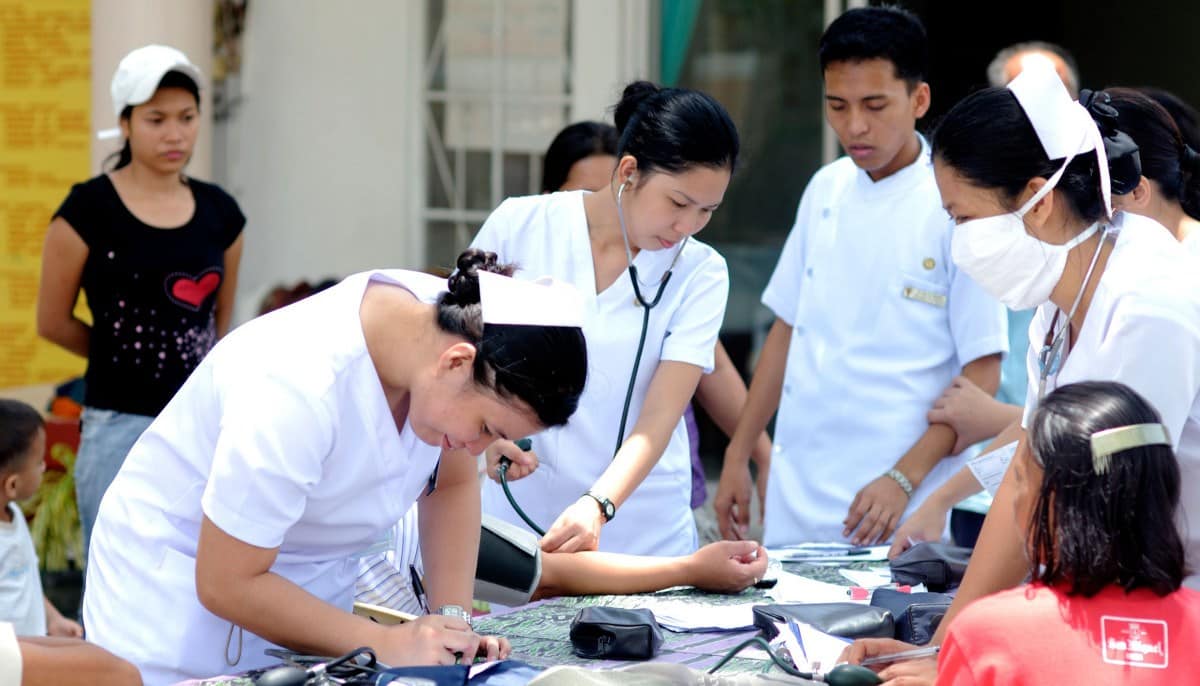Recently, the Philippines commemorated the country’s National Heroes Day as it does every year. This year, however, calls for a great appreciation for modern-day heroes, the country’s frontliners, as they risk their lives to aid others during the pandemic. And to think, they are not even being compensated as much as the others.
A study by iPrice Group, an information aggregator, recorded the salaries of the various experienced frontliners (mid-level) in 6 countries within Southeast Asia via Economic Research Institute-powered company, Salary Expert. This study aims to see how wide the wage gaps are among the countries and to analyze these earnings vis-a-vis the rise of online spending.

Data reveals that Filipino registered nurses and medical technologists earn the least among its Southeast Asian peers. Experienced registered nurses only earn about US$ 848/month, while medical technologists earn even less, at US$ 618.
The salary of Filipino registered nurses is 57% less than the next lowest paid registered nurses (US$ 1.3k/mo), which are nurses in Vietnam. Nurses in Singapore, on the other hand, earn 486% more (US$ 4.9k) than Filipino nurses.
The wage gap between the Philippines’ healthcare workers and its neighbors with similar costs of living, such as Malaysia, Thailand, and Indonesia, is also wide. Malaysian medical technologists earn 178% more than Filipino medical technologists. Meanwhile, Thai and Indonesian registered nurses earn 104% and 95% more than Filipino nurses respectively.
On the other hand, while Filipino frontliners in other fields (i.e. supermarkets, delivery, etc.) are still at the end of the spectrum, they earn more than Vietnamese employees. These include supermarket stock clerks (US$ 281), security guards (US$ 325/mo), warehouse workers (US$ 306/mo), and delivery truck driver helpers (US$490/mo). For instance, Filipino warehouse workers earn 54% more than Vietnamese warehouse workers while Filipino security guards earn 34% more than Vietnamese guards.
However, this does not put these Filipino employees at a comfortable spot. Again, looking at countries with similar costs of living, non-healthcare Filipino frontliners still don’t earn as much. For instance, Malaysian supermarket stock clerks earn 174% more than Filipino stock clerks, while Thai and Indonesian delivery truck helpers both earn about 107% more than Filipino delivery helpers.
This goes to show that Filipino wages may not be enough for their spending. Purchasing essentials online is now the new norm, and as e-commerce starts to play a vital role amidst the pandemic, iPrice looked at the average basket size (amount added to an online shopping cart) of each country in their platform.
This year, Filipinos’ average basket size increased by 57% compared to last year’s, which means Filipinos spend about US$ 27/month online. This is already close to 10% of the average salary of grocery stock clerks. In comparison, Malaysians’ average basket size is only 6% of the average grocery stock clerk’s salary despite having a higher average basket size of US$ 48. Looking at this data and comparison, we can have an idea of how much more comfortable Malaysians’ quality of life may be compared to Filipinos’.
Lastly, according to the Philippine Statistical Authority’s data, the average household expenditure of Filipinos is about US$ 418/month. Given this amount and the average salaries recorded by iPrice, we can see how the Philippines’ frontliners may struggle to make ends meet while risking their lives. They certainly deserve more than a day of appreciation.
iPrice curates highly insightful data that are unique and unbiased in the world of tech, e-commerce, and online retail by providing data-rich, interactive, and media-specific targeted content that varies from the latest tech trends to the top e-players in Southeast Asia. They also provide high-quality country-specific insights and data on seven markets, namely Singapore, Hong Kong, Vietnam, Thailand, Indonesia, Malaysia, and the Philippines. Through collaborations with data partners such as App Annie Intelligence, SimilarWeb, and Parcel Perform, iPrice has been featured on numerous prominent publications including South China Morning Post, Bloomberg, Motley Fool, Nasdaq, IGN, and Tech Crunch, to name a few.


















